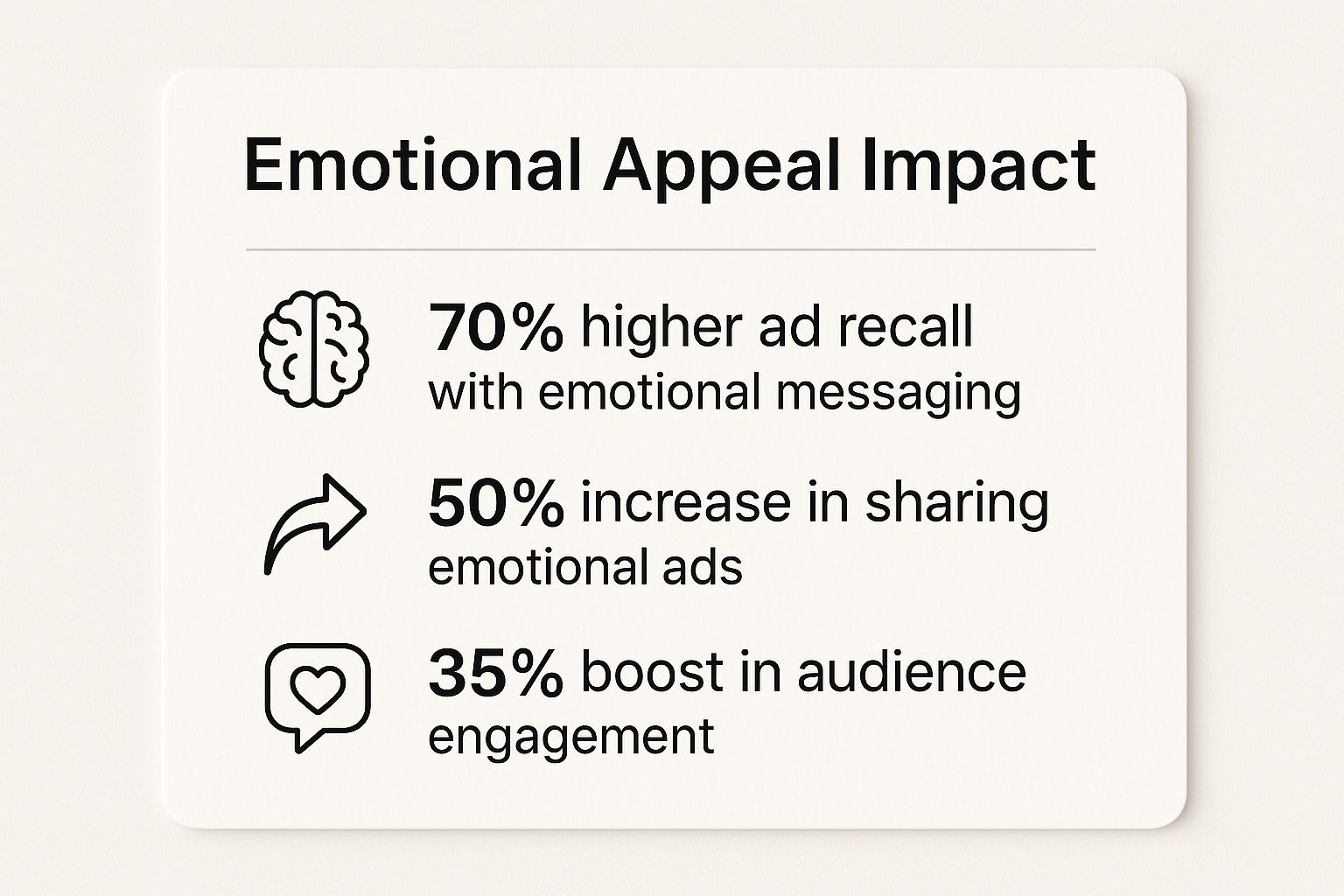
Have you ever found yourself humming a jingle from a commercial you saw days ago? Or felt a sudden urge to buy a "limited-time offer"? That's not an accident—it's psychology in advertising at work. Many creators and marketers struggle to make their message stick, but the solution often lies in understanding how the human mind works. This guide will show you the exact psychological principles that successful brands use to create memorable and persuasive campaigns, helping you move from ads that get ignored to content that gets results.
The Pioneers of Persuasion: How It All Began
Using psychology in advertising isn't a new digital marketing trick; it's a discipline with roots stretching back over a century. Before analytics dashboards and A/B testing, forward-thinking minds were already trying to crack the human psyche to sell products more effectively. Their goal was to turn advertising from a simple announcement into an applied science of human behavior. This shift laid the groundwork for the strategies marketers, creators, and agencies still use today.

The First Playbook for Modern Marketing
The real shift began in the early 20th century. American psychologist Walter Dill Scott was one of the first to connect the dots. When he published 'The Theory of Advertising' in 1903, he wrote the first playbook for modern marketing. He argued that principles like suggestion, repetition, and appealing to basic instincts were key to grabbing attention and driving sales. You can still see the impact of Scott's foundational work in the industry today.
Appealing to Unconscious Desires
While Scott focused on attention and memory, Edward Bernays—often called the "father of public relations"—took things in a deeper, more Freudian direction. He believed appealing to rational thought was a waste of time. Instead, he argued that the most powerful campaigns targeted people's unconscious desires and hidden anxieties. His big idea was to link products not to their features but to powerful emotions. He wasn't selling soap; he was selling cleanliness and social acceptance.
Perhaps the most legendary example of Bernays's genius was the "Torches of Freedom" campaign. In the 1920s, it was taboo for women to smoke in public. Bernays paid fashionable debutantes to smoke cigarettes during the 1929 Easter Sunday Parade, framing the act to the press as a symbol of women's liberation. The stunt was a masterstroke that shattered a social taboo and opened a massive new market for tobacco companies.
The Core Principles of Influence
Behind the most persuasive ad campaigns are a handful of powerful psychological principles that tap into how we make decisions. These aren't sneaky tricks; they're fundamental truths about human nature. Smart advertisers, from major agencies to solo creators, simply align their message with these existing mental shortcuts to make their content more effective.

1. Social Proof: Trusting the Crowd
Why do you instinctively check Amazon reviews before clicking "buy"? That's social proof. It’s our tendency to look at what others are doing to guide our choices, especially when we're uncertain. A product with thousands of glowing reviews sends a clear signal: this is a safe, valuable bet.
- Use Case for Creators: A freelance designer could showcase testimonials from happy clients on their portfolio website.
- Use Case for Marketers: An e-commerce brand can feature user-generated photos of customers using their products on social media.
This is precisely why testimonials, case studies, and user reviews are marketing gold. They offer an authentic stamp of approval that a polished ad could never replicate. Go deeper into the foundational concept of social proof in marketing to learn more.
2. Scarcity: Creating Urgency
Ever felt that jolt of urgency when an online store flashes "Only 3 left in stock!"? That’s the psychological trigger of scarcity. We automatically place a higher value on things that are hard to get because it taps into our fear of missing out (FOMO).
- Use Case for Startups: A SaaS company can offer a "limited-time" discount for the first 100 users who sign up for a new feature.
- Use Case for Agencies: A marketing agency might promote an exclusive, one-day workshop with limited seats available.
3. Reciprocity: The Power of Giving
Reciprocity is the social instinct to give something back when we've received something first. When a brand offers genuine value with no immediate strings attached, it creates a powerful psychological pull.
- Use Case for Creators: A content creator can offer a free, high-value ebook or template in exchange for an email subscription.
- Use Case for Marketers: A software company can provide a no-obligation free trial of its premium features.
The key is to provide genuine, unexpected value. By helping your audience solve a real problem, you build trust and an unspoken desire for them to return the favor.
How Cognitive Biases Shape Our Choices
Cognitive biases are the mental shortcuts our brains use to make decisions quickly. For marketers, these automatic responses are an open invitation. By framing information in the right way, they can tap into these built-in thought patterns, making a purchase feel less like a decision and more like the only natural thing to do.

4. Anchoring Bias: Setting the Standard
Ever seen a luxury bag with a $2,000 price tag and suddenly felt the $300 one next to it was a steal? That’s the Anchoring Bias. Our minds latch onto the first piece of information we get—the anchor—and use it as a benchmark for what follows.
- Use Case for Marketers: An online course creator shows the "Total Value" of all modules ($1,997) before revealing the actual price of $197.
5. Bandwagon Effect: Following the Crowd
The Bandwagon Effect is our deep-seated desire to be part of the in-group. When we see a product or idea gaining massive popularity, we feel an irresistible pull to jump on board. This is why phrases like "bestseller" and "customer favorite" are so effective.
- Use Case for Startups: A mobile app can highlight its download count ("Join 1 million+ users!") on its app store page.
6. Loss Aversion: Fearing the Loss
What feels more intense—the joy of finding $100 or the pain of losing $100? For most, the sting of loss hits harder. That’s Loss Aversion. We are more motivated to avoid a loss than to achieve an equivalent gain.
- Use Case for Creators: A freelancer offering a promotional rate can frame it as, "Book now before this introductory price is gone forever!"
👉 Try MediaWorkbench.ai for free – schedule your posts and generate AI content in one place!
Connecting Through Emotion and Color
Facts and figures are fine, but feelings are what build loyalty. The real soul of advertising is emotional connection. Nike doesn't just sell you sneakers; they sell the feeling of achieving your personal best. Coca-Cola sells happiness in a bottle. This is a core idea in the psychology of advertising: sell the feeling, not the feature.

7. Color Psychology: The Unspoken Language
Color is a silent powerhouse that shapes our perceptions. Up to 90% of our snap judgments about a product can be based on color alone.
- Blue: Communicates trust and dependability (Chase Bank, Meta).
- Red: Creates a sense of urgency and excitement (Target, Coca-Cola).
- Green: Tied to health, nature, and wealth (Whole Foods, Fidelity).
8. Storytelling: Crafting a Narrative That Resonates
A great story turns a faceless company into a character people can connect with. The trick is to make the customer the hero, with your product as the tool that helps them win.
- Use Case for Startups: A small business can share its founder's story, detailing the problem they faced and how their product solved it for themselves and now for others.
9. Authority: Leaning on Expertise
We are wired to trust credible experts. The authority principle is why a dentist’s recommendation for toothpaste carries more weight than a random celebrity's.
- Use Case for Agencies: An agency can publish a detailed case study with data-backed results to position itself as an industry leader.
10. Confirmation Bias: Seeking Validation
We naturally favor information that confirms what we already believe about ourselves. Smart marketers align their brand’s message with their target audience's identity.
- Use Case for Marketers: An eco-conscious brand can run ads celebrating sustainability, validating the customer's identity as a responsible person.
Using Psychology Responsibly in Your Marketing
Understanding these principles gives marketers a powerful toolkit, but there's a fine line between ethical persuasion and manipulation. The goal should always be to solve a customer's problem and highlight real value. Ethical marketing creates a win-win, while manipulation exploits vulnerabilities for a short-term gain that destroys trust.
To apply these principles responsibly:
- Provide Genuine Value: Ensure your offers are truly helpful and solve a real problem.
- Be Honest and Transparent: Don't use misleading claims or invent scarcity.
- Empower, Don't Pressure: Help customers feel confident in their choice, don't corner them.
Ethical marketing is a long-term investment in your brand’s reputation. For more on building sustainable strategies, check out our guide to marketing automation best practices.
Conclusion: Connect, Don't Just Convert
We've explored the fascinating world where psychology and advertising meet. From social proof to the subtle nudges of cognitive biases, the main takeaway is simple: the best marketing doesn't just sell—it speaks to our fundamental human nature. The goal is to build genuine relationships by understanding what truly motivates your audience. By applying these insights ethically, you can create campaigns that offer real value and build a loyal community around your brand.
Ready to create advertising that truly resonates? Pair these timeless human insights with modern technology. Explore how MediaWorkbench.ai can help you generate compelling content, schedule posts, and streamline your entire workflow.
Ready to put these psychological principles into practice? MediaWorkbench.ai helps you craft compelling ad copy, generate stunning visuals, and streamline your content workflow. Start creating for free today.

